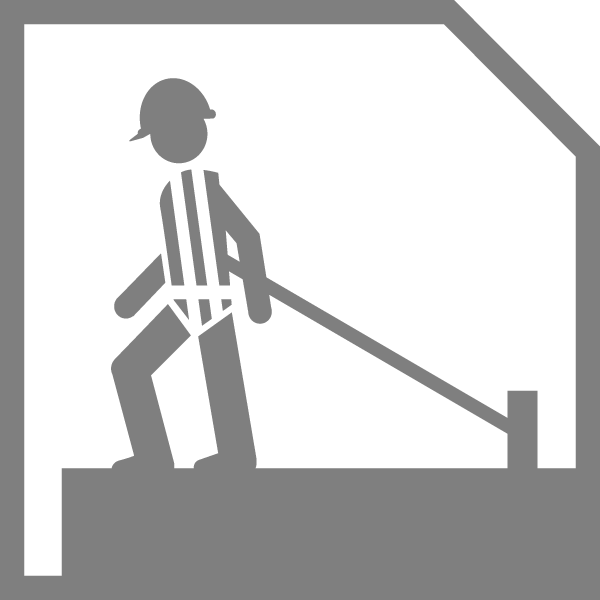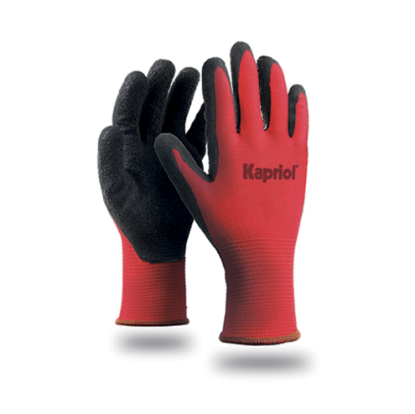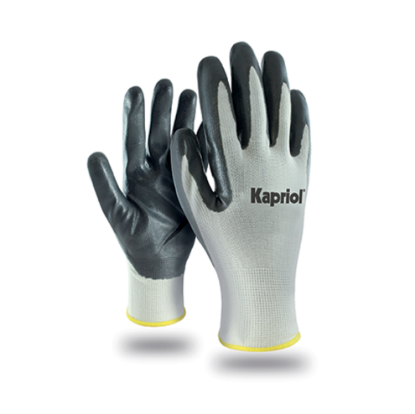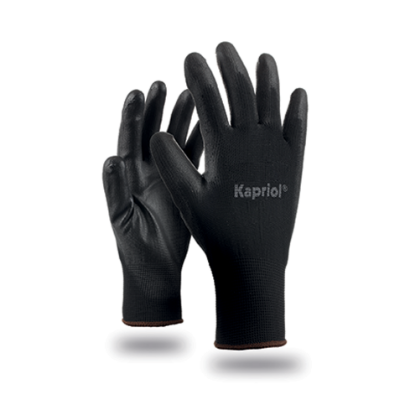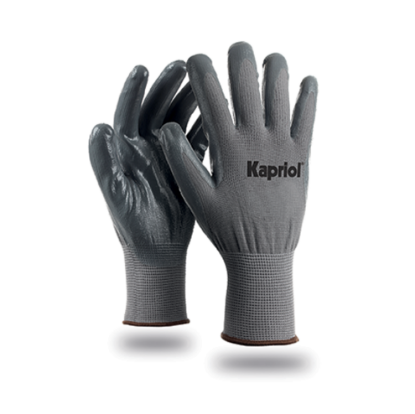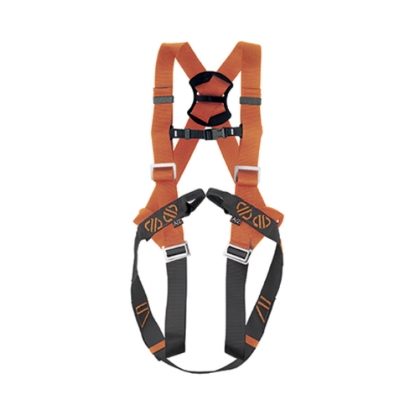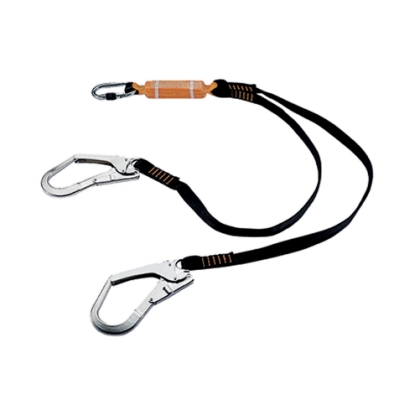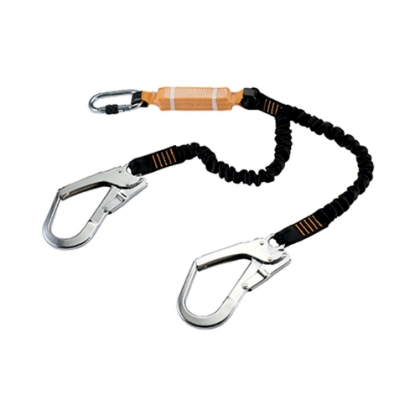| Art./Item | Apertura (mm.) | Length (mt) |
|---|---|---|
| 27959 | 56 | 2 |
EN 355 compliant elastic fall arrest lanyard with ferrule connector for attachment to the harness. This single-connector fall arrester lanyard with safety lever makes it easier for the operator to move around due to its small size.
The elastic fall arrest lanyard is also equipped with an energy dissipator to absorb the force of impact in the event of a fall.
TECHNICAL SPECIFICATIONS
- Ferrule connector
- Connector with 56mm opening and safety lever
- Energy absorber with 32 mm webbing and PE containment cover
- Length 2 m
- EN 355 standard
MATERIAL
- Connectors: steel
- Webbing: polyamide
- Containment casing: polyethylene
Connectors and energy absorber
Maintenance and storage of PPE
PPE periodic checks and inspections
Use on structures and scaffolding
Energy absorber
Falling factors
Fall arrest lanyards
All fall protection lanyards are fitted with connectors and energy absorption system. Depending on the type of use, the connectors can have different opening systems and be made from different materials. The energy absorption All fall protection lanyard are fitted with connectors and energy absorption system. Depending on the type of use, the connectors can have different opening systems and be made from different materials. The energy absorber consists of polyamide webbing, with a transparent polyethylene containment shell and protection (not to be removed), for easy inspection purposes. In the event of a fall, the energy absorption system dissipates the impact force: the fall energy is absorbed by laceration of the special stitching.
- There are two types of laceration energy absorbers:
- with a max excursion distance of cm 70
- with an excursion distance of up to 120 cm
In work situations where the fall factor is equal to or greater than 1, the use of fall arrest devices equipped with energy absorber (EN 355) is mandatory. Lanyards with energy absorber must not exceed the maximum length of 2 meters including snap hooks.
WARNINGS:
- Minimize the height of possible fall
- Whenever possible, limit the fall factor as far as possible, avoiding it to be greater than 2
- Make sure that in the event of a possible fall, the operator does not encounter obstacles before the arrest occurs
Always calculate the safe fall clearance below the anchor point so that the operator doesn’t touch the ground after the fall
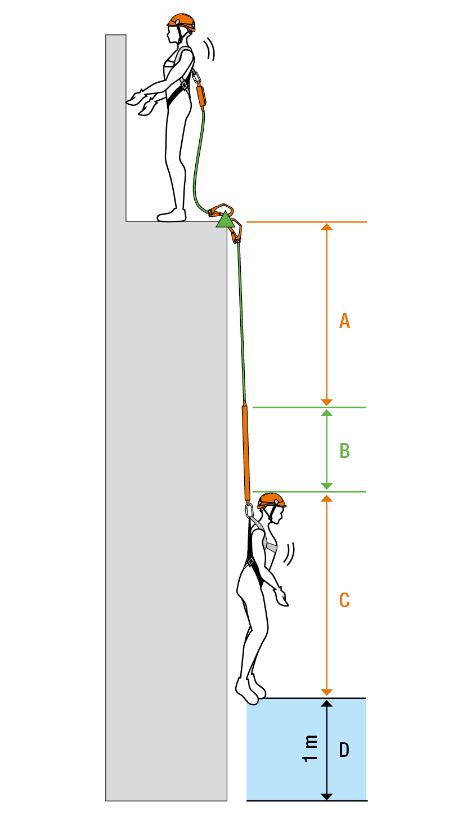
Correct and regular maintenance helps prevent premature ageing of PPE. For this reason, users are recommended to carefully respect all indications found in the user and maintenance manual that accompanies each PPE and to follow the simple storage and preservation rules:
- Keep away from sunlight and UV rays as these are the primary cause of ageing of PPE textile fibers
- Keep PPE away from direct heat sources as the synthetic textile fibers used to make harnesses, lanyards, and energy absorption systems have a very low melting temperature
- PPE must be stored in cool and dry areas, as humidity generates mold harmful to textile fibers and corrosive on metal parts
- A periodic cleaning operation is essential to ensure a good durability of the PPE
- A washing with lukewarm water eliminates surface dirt and that present inside the textile fibers
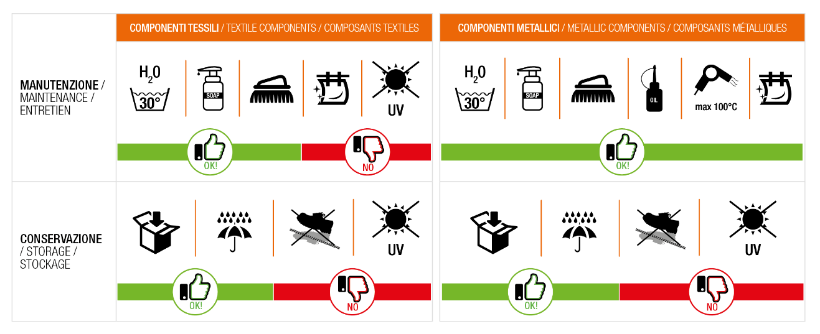
The current legislation requires that each equipment must be subjected to periodic inspections:
- Before, during and after use, the user must check the PPE conditions and integrity through a visual inspection after each use
- At least every 12 months, PPE must be subjected to mandatory periodic checks and inspections by competent personnel authorized by the manufacturing company
Each PPE is accompanied by a manual and identity card that must be kept for the entire use duration of the product and filled in with the periodic inspections data.
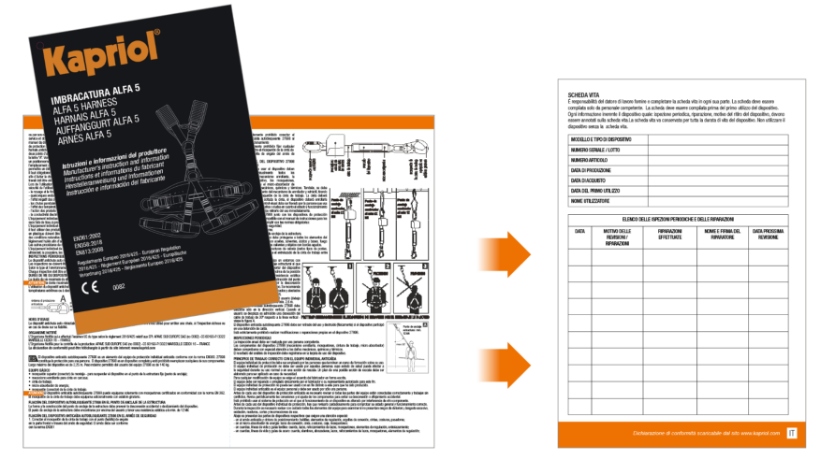
PHASE 1. Connect the lanyard small connector to the breast or back harness ring
PHASE 2. Connect the large single or double lever connector to the scaffolding
PHASE 3. Access the part of scaffolding without parapet to proceed with the work
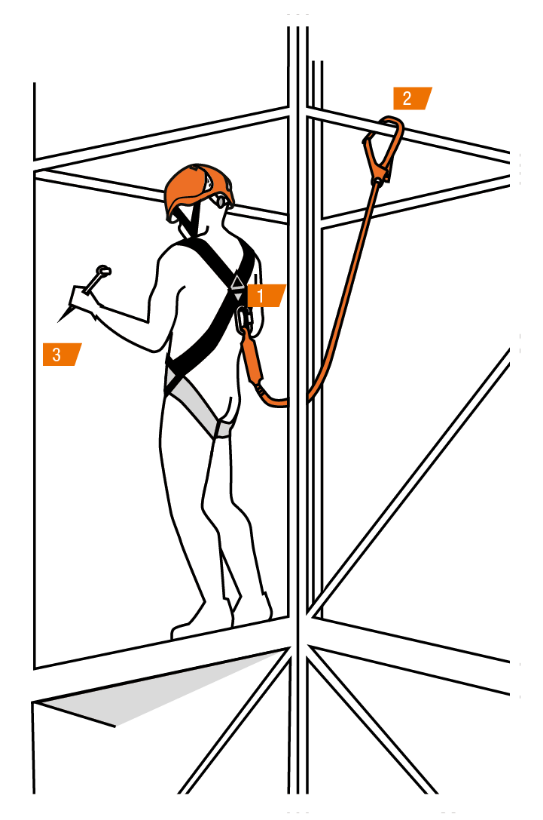
LANYARD WITHOUT ENERGY ABSORBER
PHASE 1: situation of potential fall risk
PHASE 2: (Pic. X) during the fall the lanyard does not perform a shock-absorbing function
PHASE 3: (Pic. X) the energy caused by the fall is absorbed completely by the body of the operator / l’énergie provoquée par la chute se répercute complètement sur le corps de l’opérateur
LANYARD WITH ENERGY ABSORBER
PHASE 1: situation of potential fall risk
PHASE 2: (Pic. Y) in the fall, the lanyard performs a shock-absorbing function thanks to the effect of the energy absorber
PHASE 3: (Pic. Y) the energy caused by a fall is remarkably reduced by the effect of the energy absorber
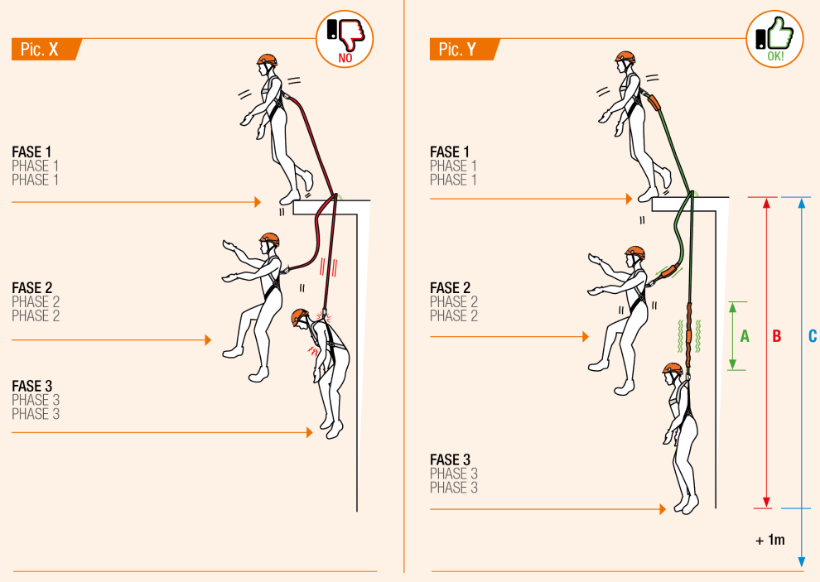
A FATTORE DI CADUTA 0
Il punto di ancoraggio è posto al di sopra della testa dell'operatore; il dispositivo anticaduta risulta essere completamente disteso. In caso di caduta si ha la minor distanza tra il piano di calpestio dell'operatore e il possibile ostacolo sottostante.
B FATTORE DI CADUTA 1
Il punto di ancoraggio è posto allo stesso livello del punto di attacco dell'imbracatura. In questo caso la caduta è pari alla lunghezza del cordino + la distanza del assorbitore di energia intervenuto.
C FATTORE DI CADUTA 2
Il punto di ancoraggio è posto sullo stesso piano di calpestio dell'operatore. In questo caso la caduta è pari a due volte la lunghezza del cordino + la distanza dell'assorbitore di energia intervenuto.
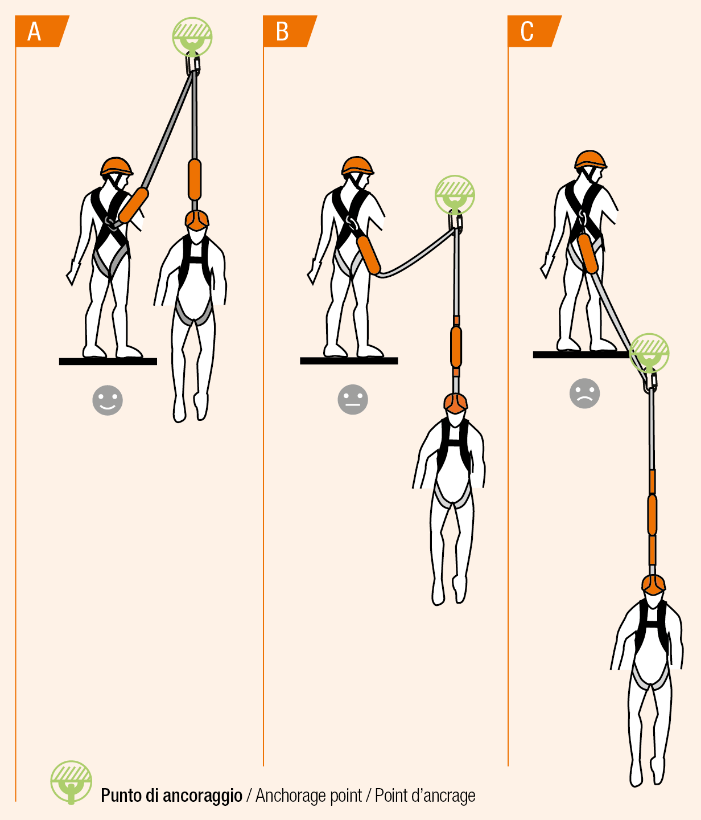
Fall protection lanyards are the connecting element between the harness and the anchorage point. They protect the operator during a fall, reducing the arrest and reducing the impact force by an energy absorption system. To correctly use a fall arrest lanyard, it is necessary to install suitable anchorage points in advance. It is essential to remember that the adjustable positioning lanyards are not fall protection devices and hence they can not be used for this purpose.
Recommended use
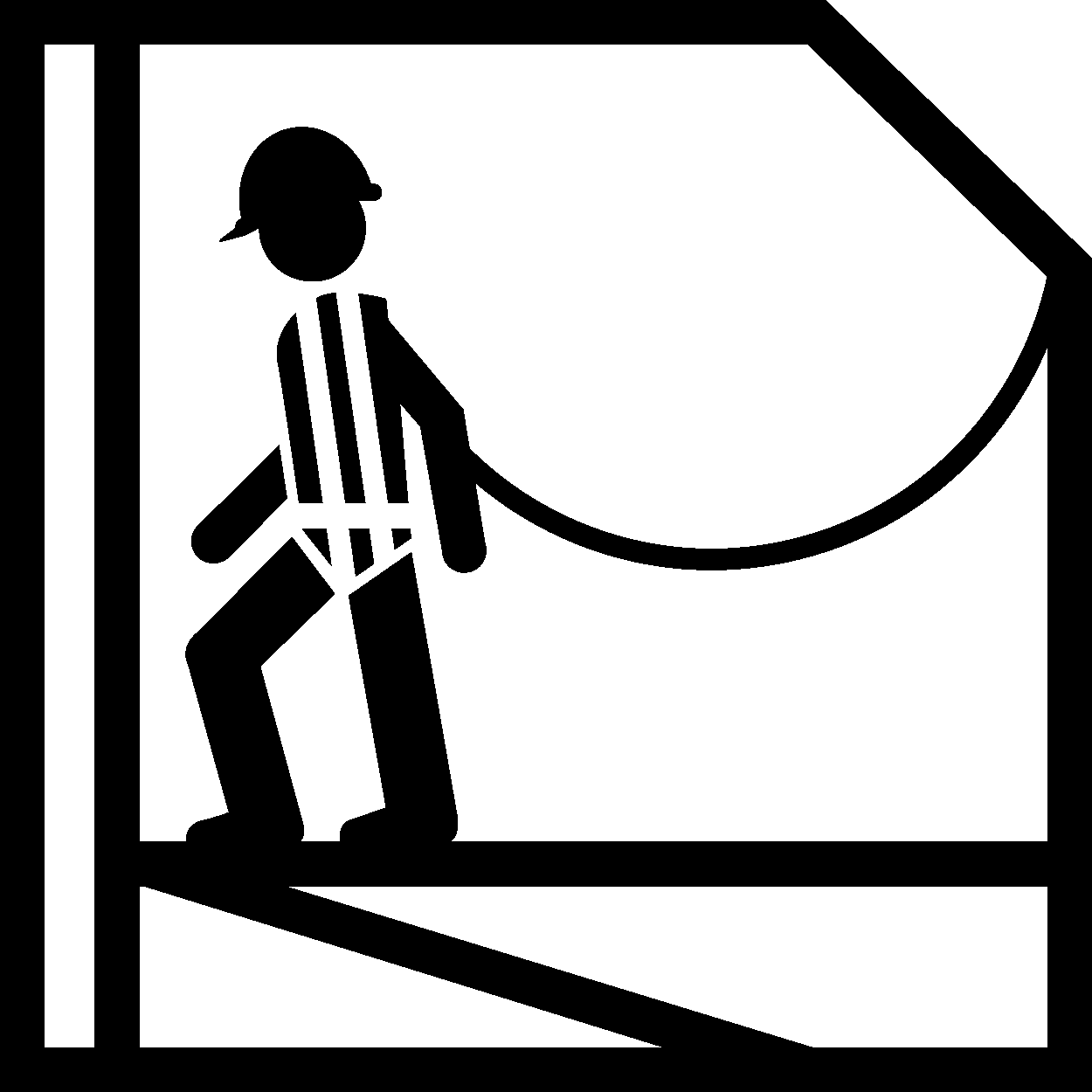
Scaffolding
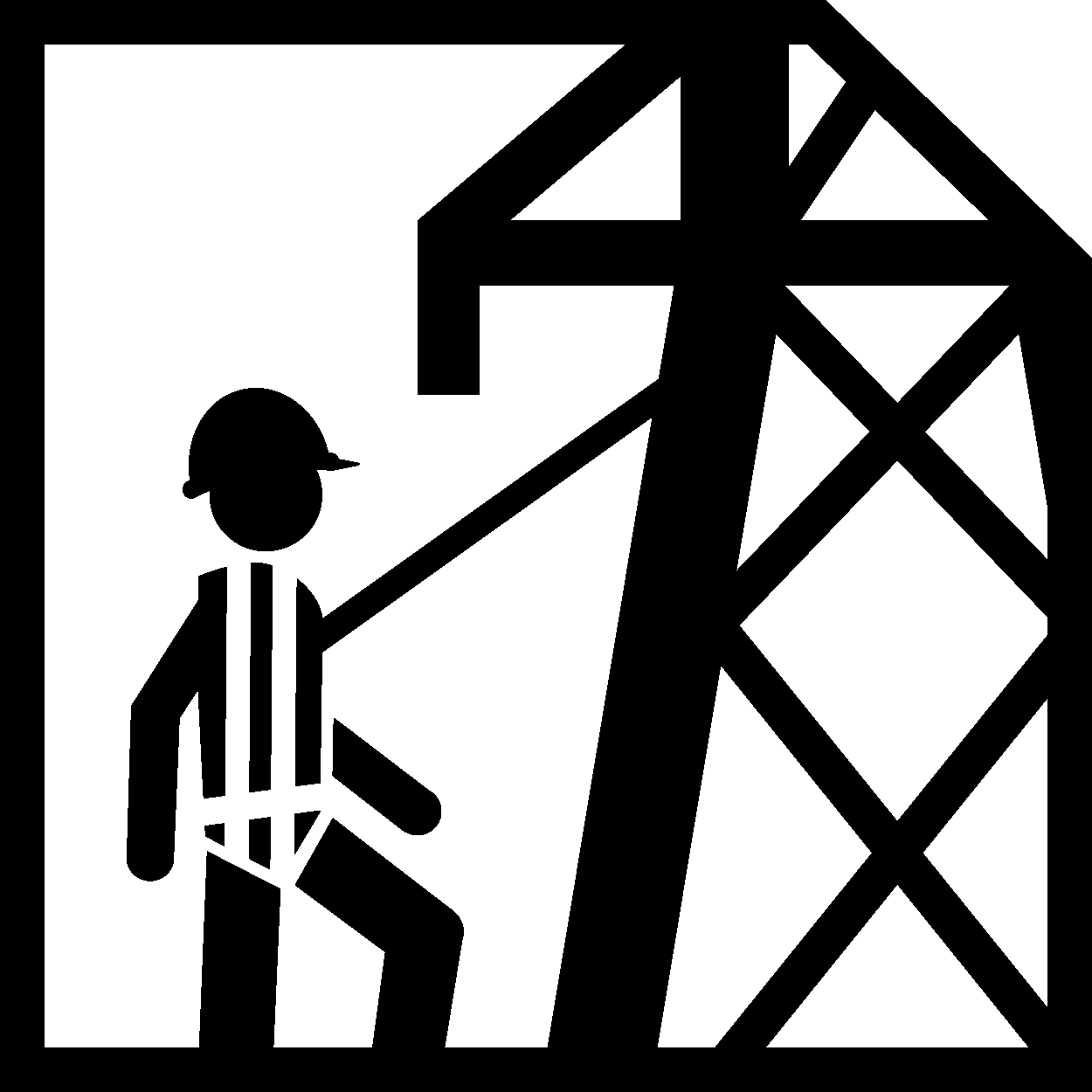
Trellis
Possible use
